Founded by the Cham in the 4th century Hoi An once was the biggest harbour in South-East-Asia,
with merchants from China and Japan, later from France.
Due to political changes and the filling of the river mouth with sand
Hoi an lost its role completely to Da Nang.
Therefore the old town was completely preserved, which makes it one of Vietnams
main tourist attractions.
We happened to be there during the peak of the celebrations for the Buddhist New Year.
The town is already a beauty, with countless ancient houses, assembly halls, pagodas and family chapels, but during
the Tet every street is also full of flowers and hanging lanterns that further grace this lovely town.
The highlight was New Year Eve. During the entire evening, people lower into the river small paper cups with a candle
in it. They float with the stream and tradition wants that the farther they go, the better your luck in
the coming year.
|
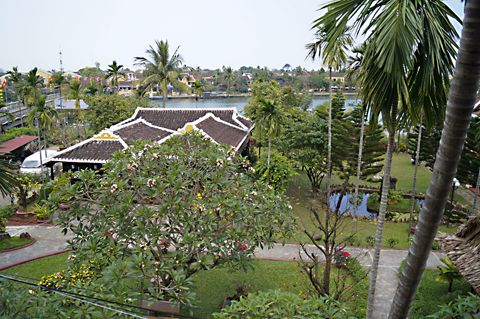 |
|
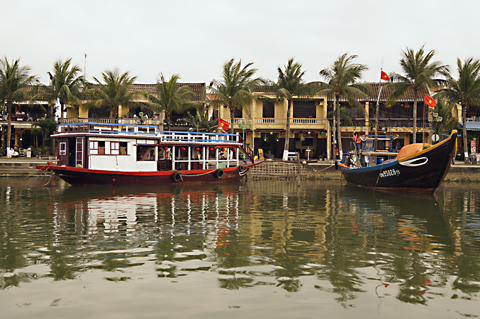 |
|
The Japanese bridge is the landmark of the town. It was built to connect the Chinese with the Japanese quarter.
It includes a small pagoda. Nearby the bridge is the boat rental and one of the traditional fishing nets.
|
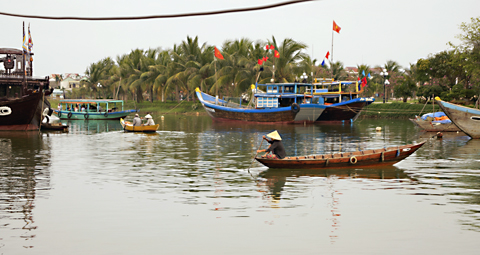 |
|
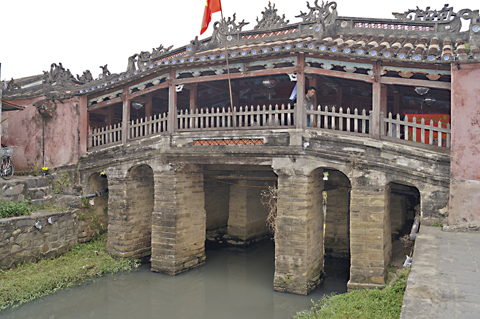 |
|
One foreigner or two Vietnamese - we don't know, how many boats capsized
before this rule was established.
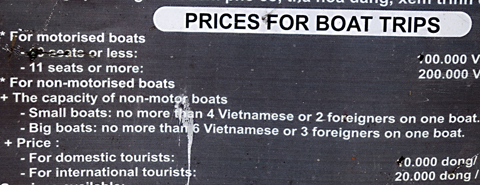 |
|
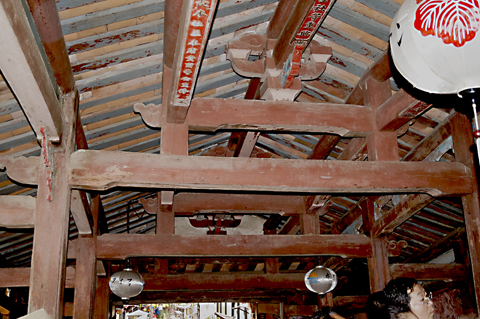 |
|
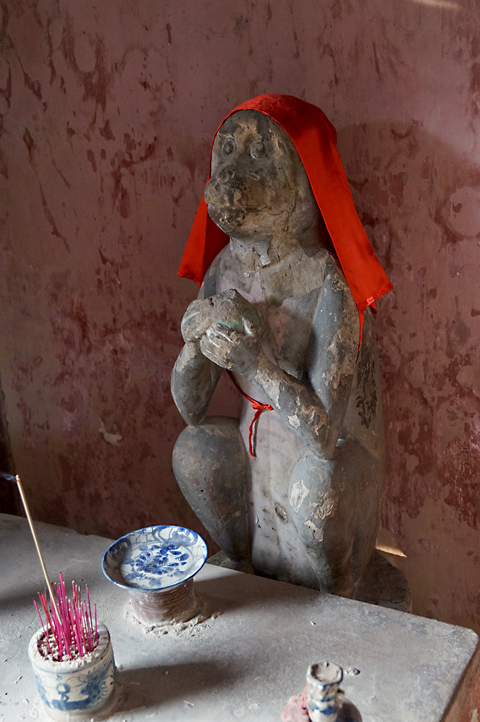 |
|
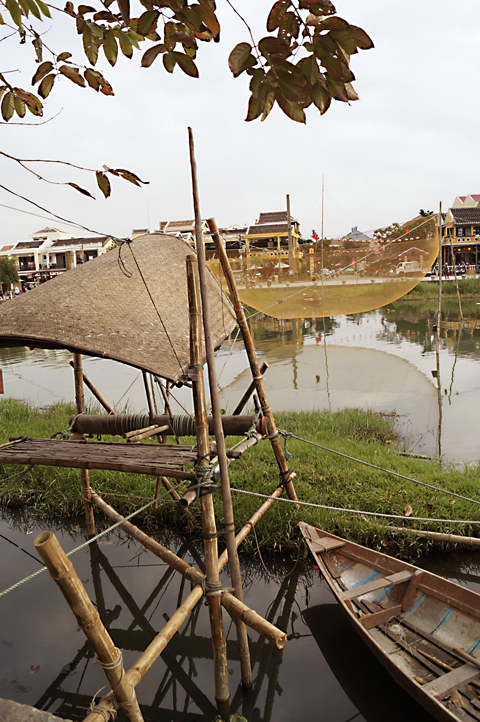 |
|
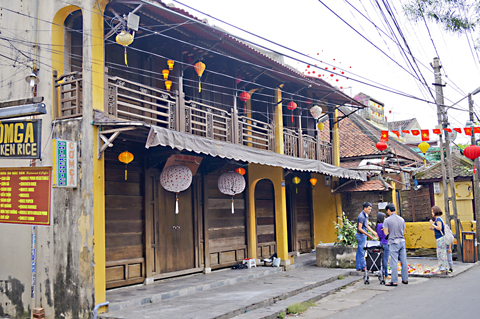 |
|
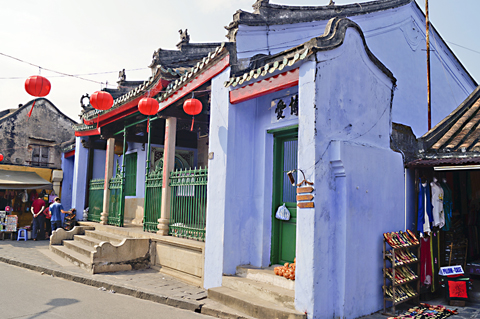 |
|
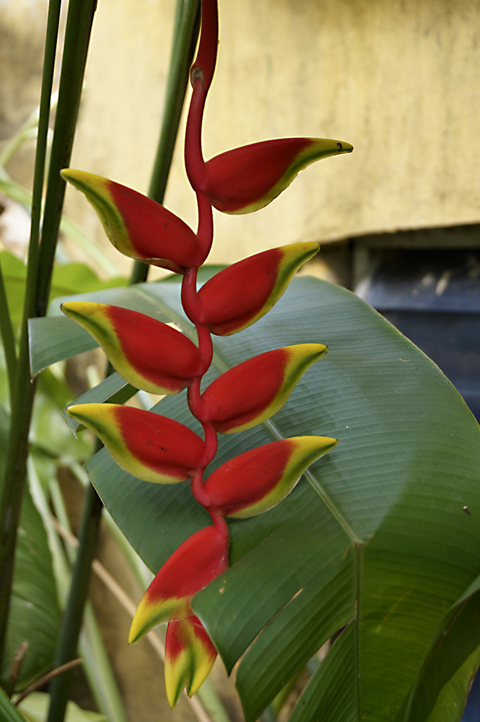 |
|
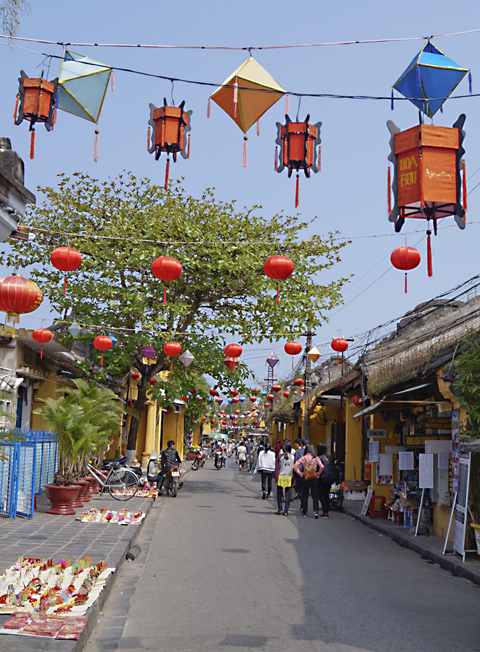 |
|
Even more than the very beautiful pagodas and assembly halls, Hoi An's ancient houses
are worth a visit without hurry. Many are more than three centuries old and sometimes still owned by
the descendants of the merchants who originally built them. The valuable wood used in the construction,
the fine carvings, the delicate inlays of mother-of-pearl in doors and windows speak for the wealth of
the owner, however style and size are not pompous. The layout is the one still in use in Vietnam: the
house is built lengthwise, with a rather narrow front and the rooms lined one behind the other, with a
small open yard to separate the reception rooms in the front from the private living quarters in the back.
One feature is quite unique: a big pulley hanging from one of the strong beams that support the ceiling.
Every year, when the heavy monsoon rains come, the Thu Bon river floods the town, and every year since
centuries, its inhabitants lift the furniture of their parlors up to the first floor.
|
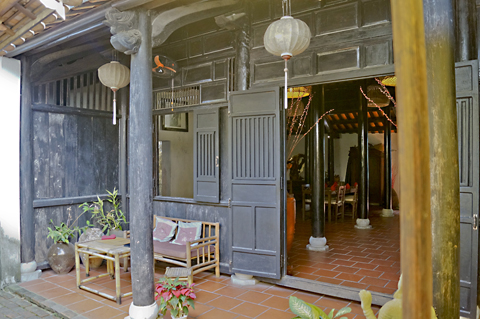 |
|
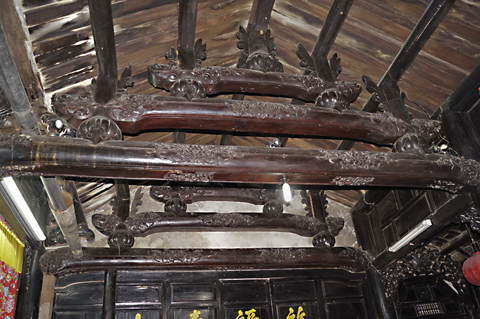 |
|
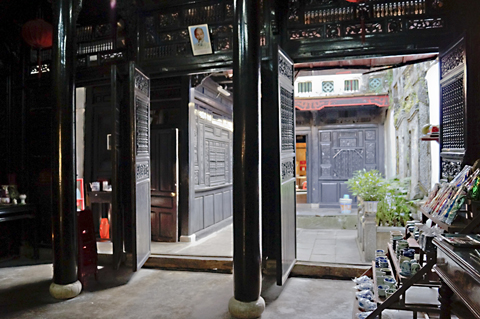 |
|
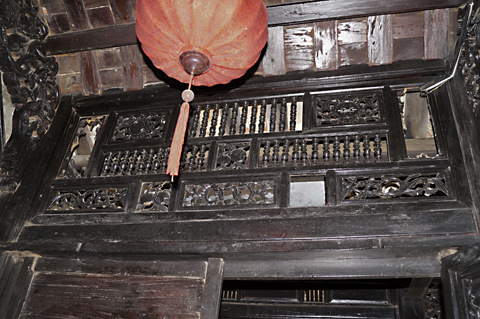 |
|
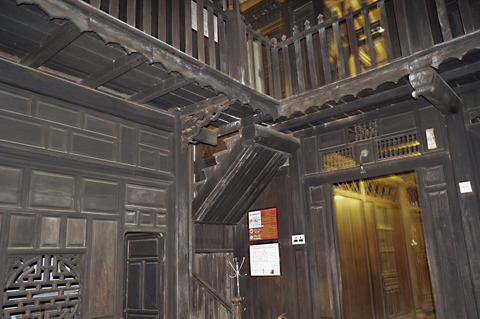 |
|
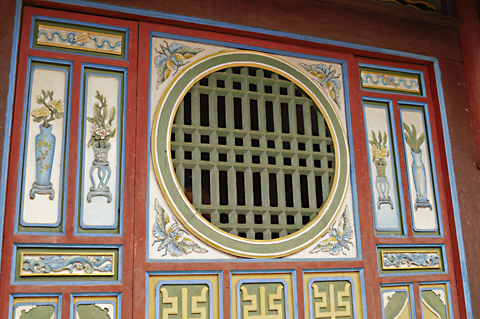 |
|
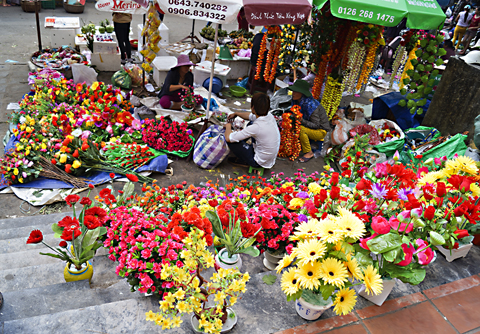 |
|
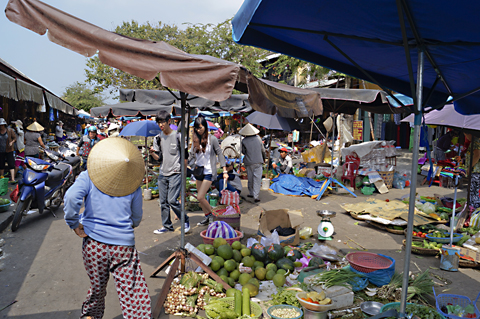 |
|
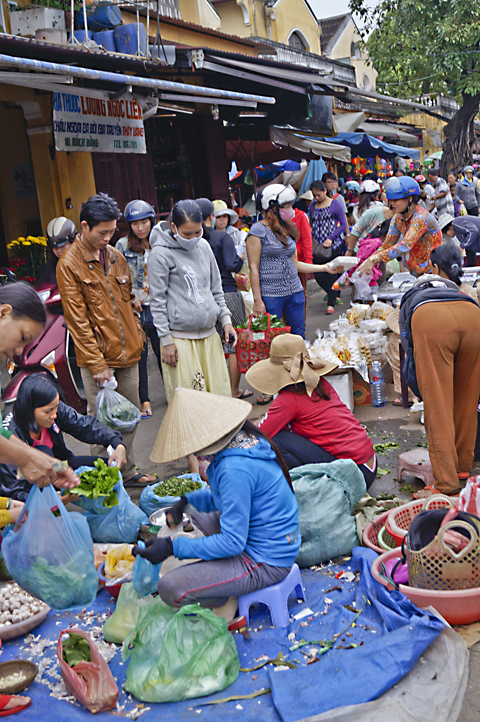 |
|
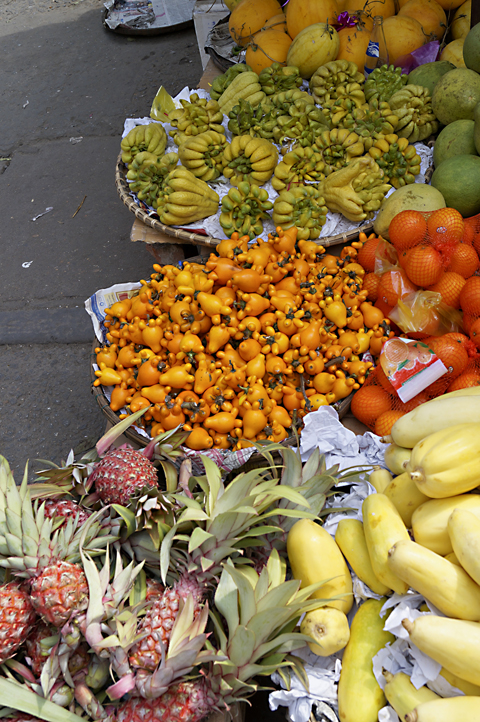 |
|
Lots of motorcycles create a traffic jam even in the market.
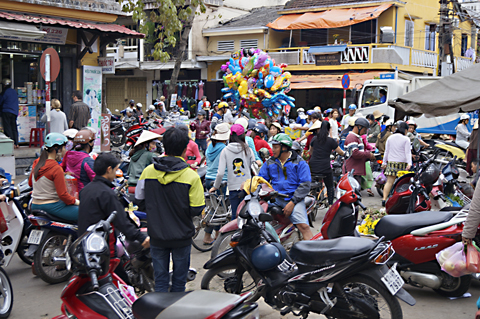 |
|
Firstly we wondered "Why do they sell bras in plastic boxes", then we found out
these are birds nests for the famous soup.
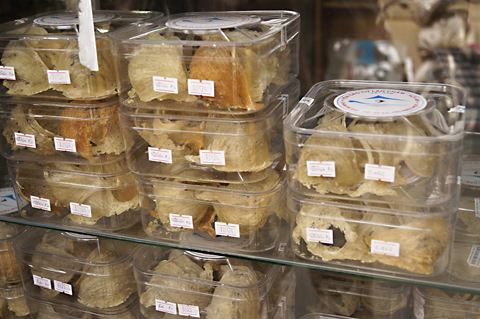 |
|
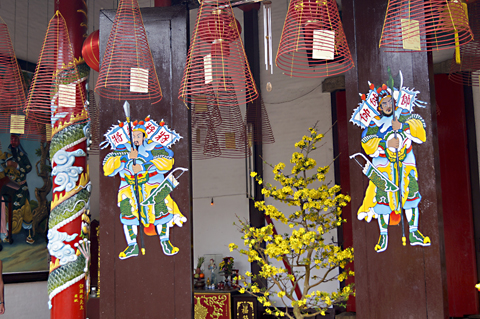 |
|
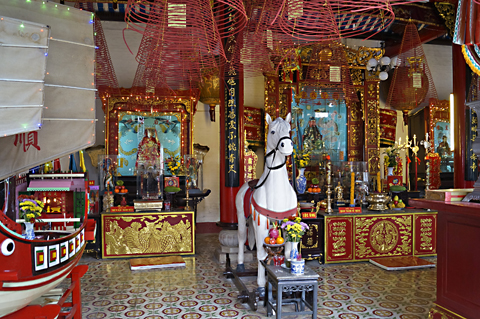 |
|
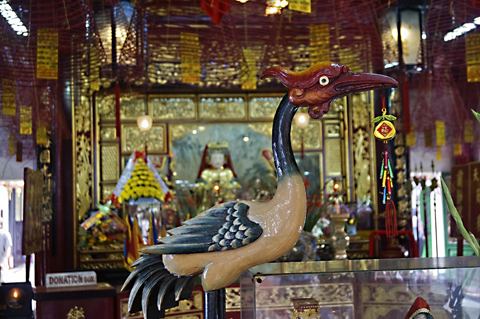 |
|
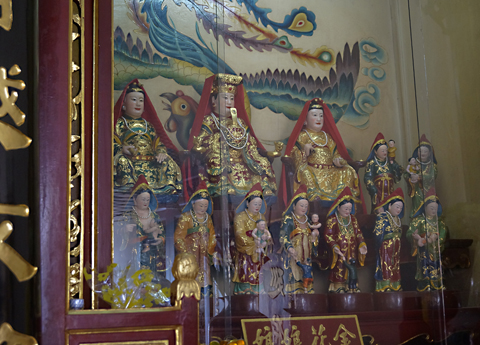 |
|
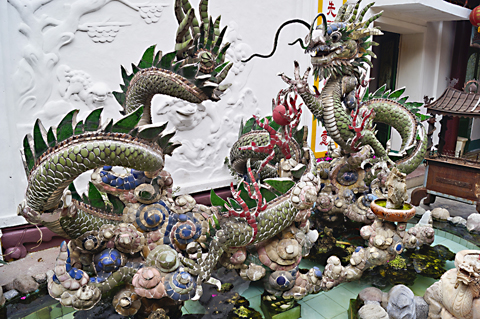 |
|
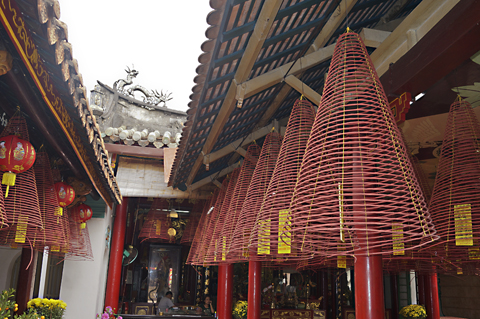 |
|
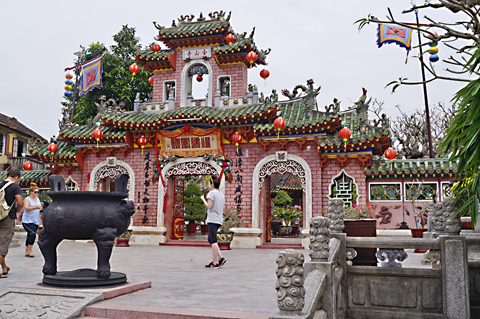 |
|
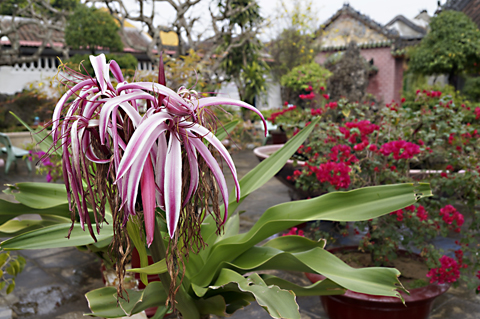 |
|
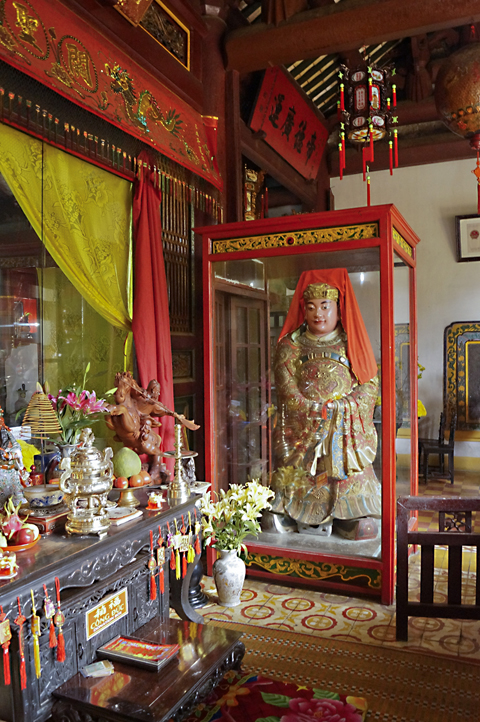 |
|
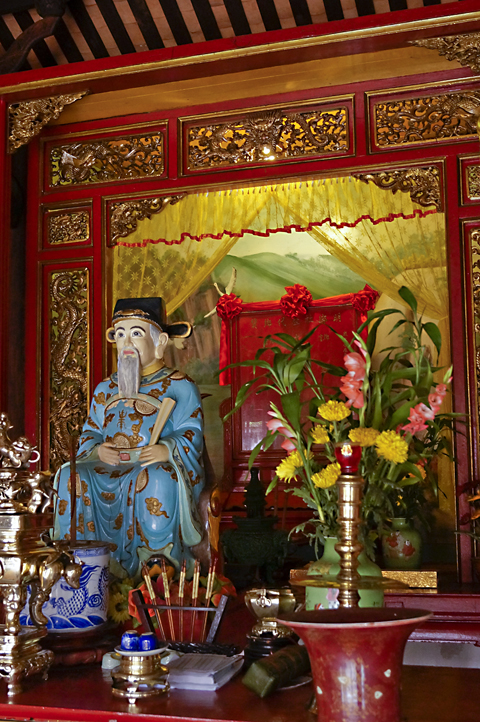 |
|
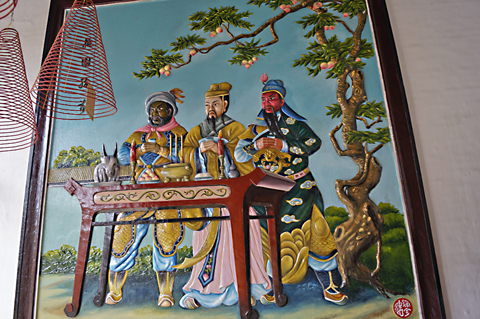 |
|
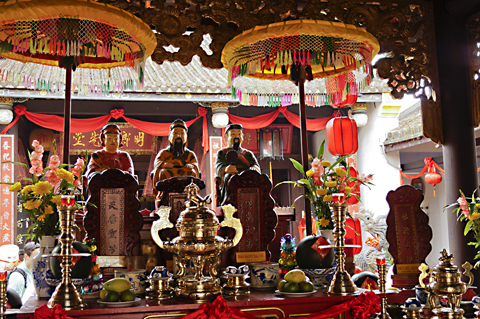 |
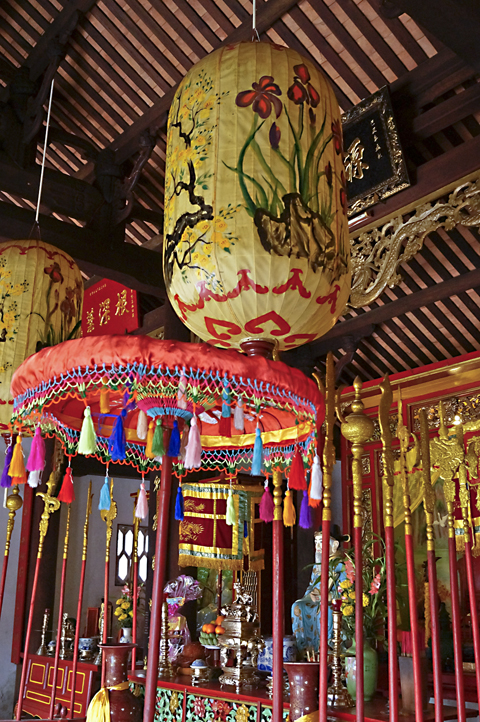 |
|
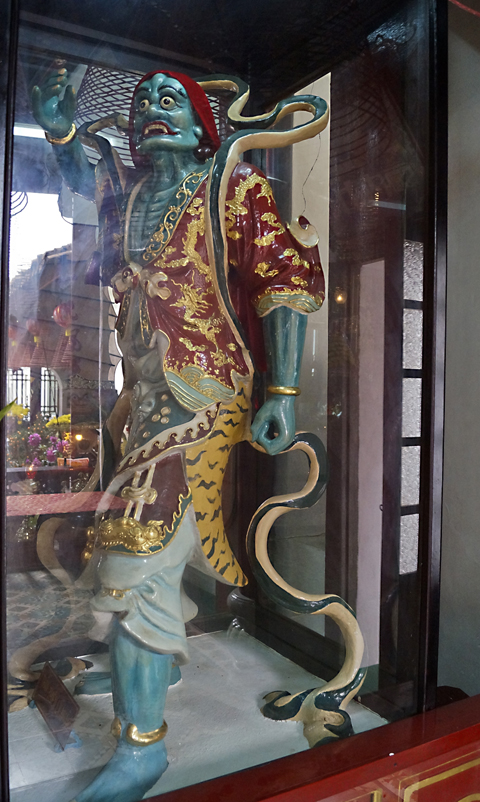 |
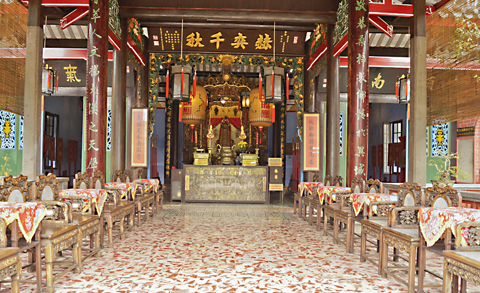 |
|
Traditional music and dances are performed at some places. However this caters mainly for tourist demands.
The young people of Vietnam rather follow the main stream western music, which is a pity, since some of these musicians
are real virtuosos like the guy with the violin-like instrument. We hope for the future, that there will be some kind of
fusion music that adapts tradition to modern listening expectations, as it has successfully been achieved in other musical traditions.
|
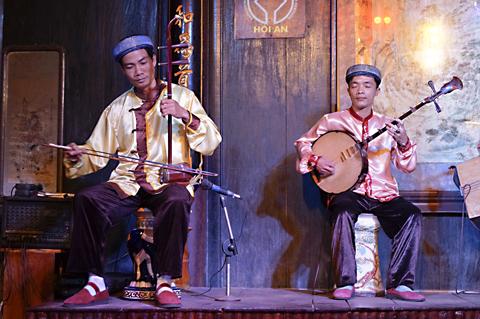 |
|
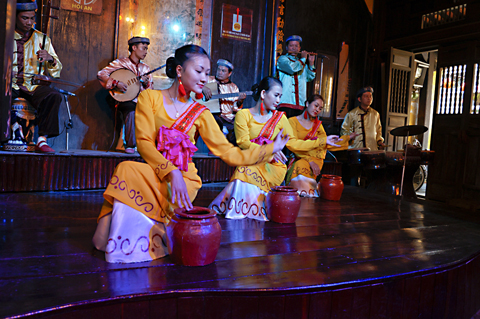 |
|
We couldn't follow this charming ladies invitation to watch a performance at the theatre as it
was closed during Tet, so we watched the fireworks from the riverside.
|
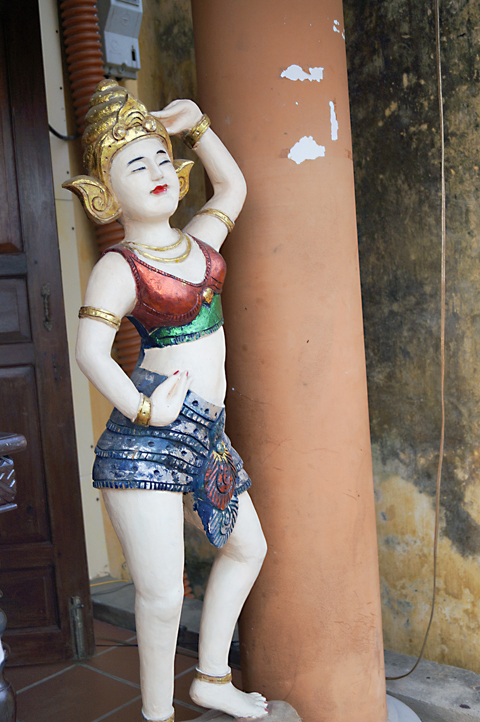 |
|
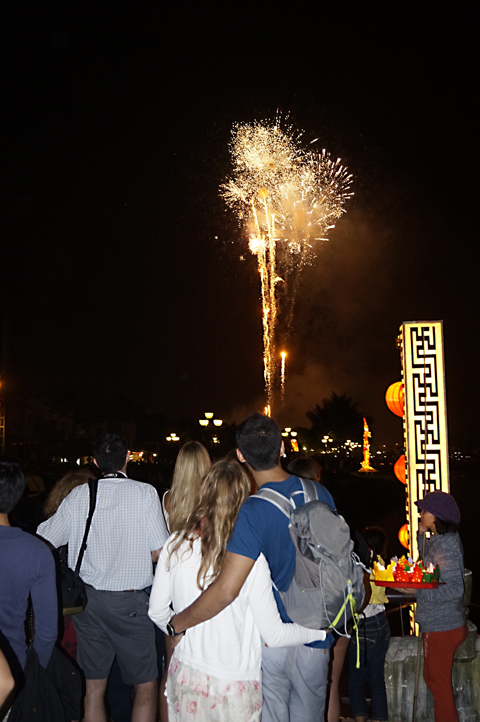 |
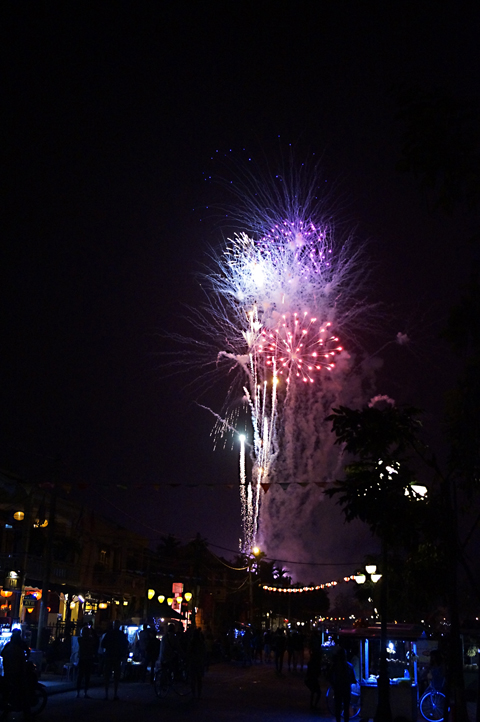 |
|
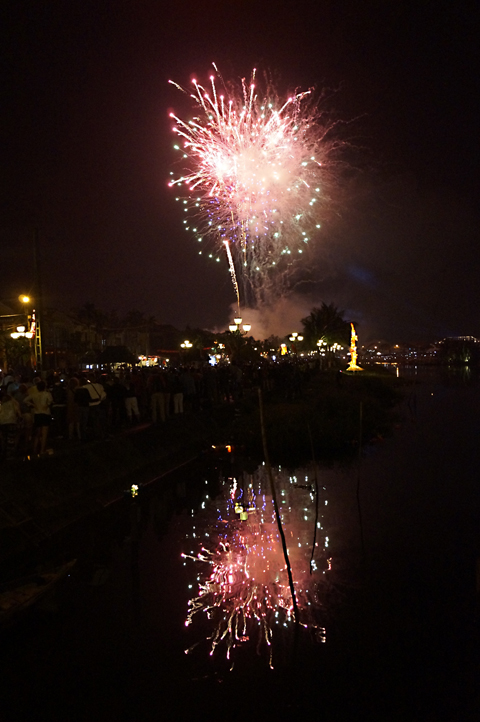 |
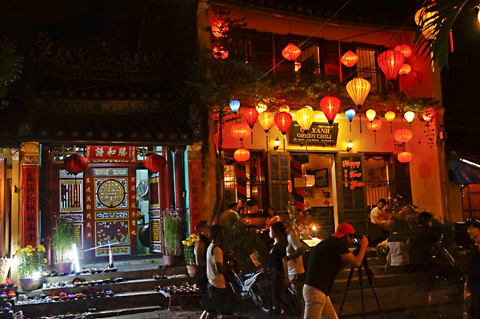 |
|
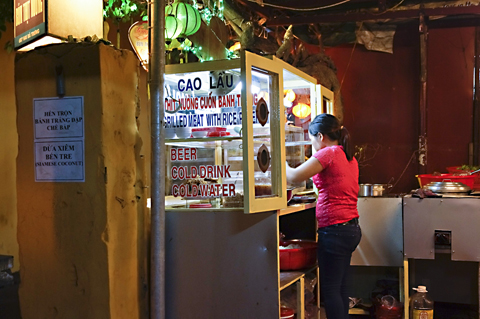 |
|
There is virtually no dish in Vietnam that doesn't come on the table with fresh greens on the side.
This is why the Vegetable Garden nearby Hoi An is a good place to learn the basics of Vietnamese cuisine. The very
extensive vegetable cultivation area offers an exhaustive sample of the endless variety of fresh greens used in the
country: salad leaves, morning glory, coriander, sweet basil, mint, scallions and several less common edible plants
are displayed in neatly cut patches that make an open-air showcase, as well as a pleasant walk.
In addition, around
the gardens the visitor can find several nice restaurants whose menu include specialties from the main culinary styles
of Vietnam. It was pure chance that we picked the restaurant run by Nguyen Thu Huong, the author of "Delicious
Dishes from Vietnam", the cookbook we had just purchased in the shop of the Cham Museum in Da Nang!
|
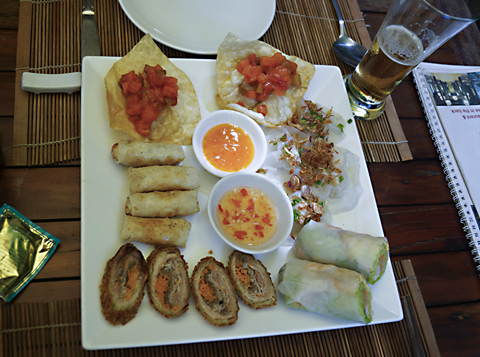 |
|
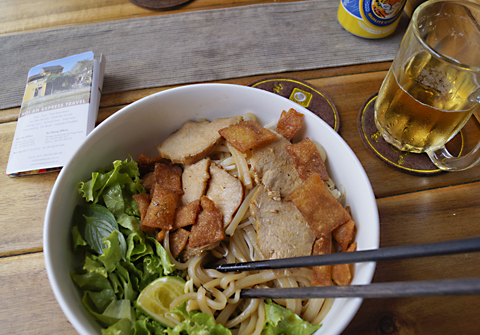 |
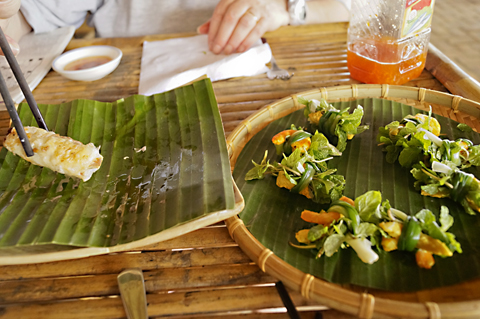 |
|
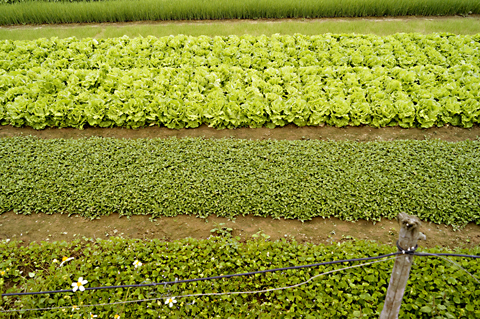 |
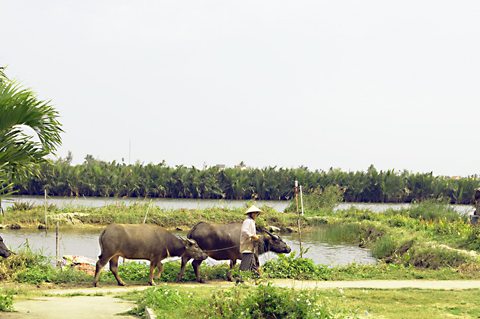 |
|
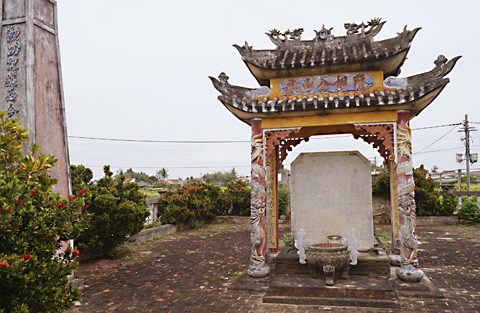 |
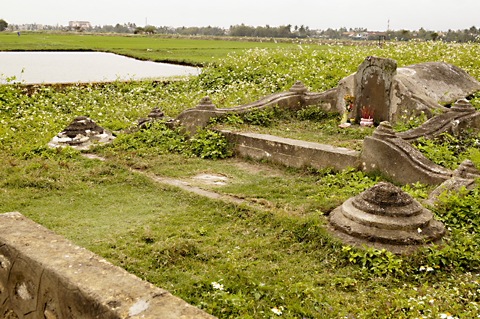 |
|
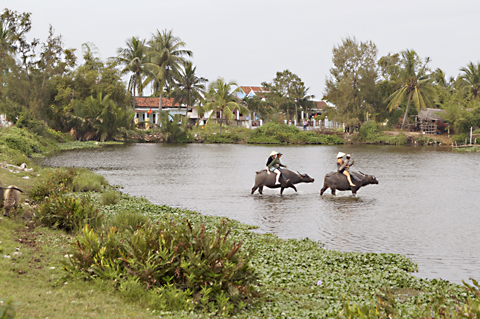 |

